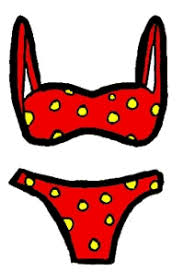 T
To any decision there is a process that precedes it. Whether that decision is an everyday choice or an important decision that may affect one’s future there is a mental process that is gone through to make the final choice. This is also true with literature. The author must first decide what they are going to write about which may be considered the ingredients of the story. Ingredients of a story may include the following: sources, inspiration, setting, plot, theme, grammar, point of view, tone, voice, and word choice. After the ingredients are decided upon, the author must go through the process of putting the story together. This could be in the form of an essay, short story, poem, play, or any visual text. Finally, when the story is put together you have a “made thing” that may consist of an idea or underlying meaning. This is the process that was taken when writing A&P, Rites of Passage, and The One Girl at the Boy’s Party.
When reading A&P, the reader may take away a particular meaning from the story, but when broken down into its different components, A&P has many different meanings. The story takes place in an A&P supermarket in a small town. The customers are described as sheep and Sammy, the protagonist, is the cashier. Some other important ingredients that stood out to me were the three girls in swimsuits, the word Queenie used to describe the leader of the girls, the manager and his words that embarrassed the girls, Sammy’s “I quit”, and the girls ignorance to what happened. The way Updike put all these things together added to the “made thing”. He used the trope of a rich girl/poor guy to appeal to the reader. Also, the use of conversation was very effective toward the meaning of the story because the reader could tell by quotation marks what the characters were making public knowledge by saying aloud and what only the reader knows from the characters thoughts. The description of the girls was a process used as well. When putting all of this back together, you get the “made thing” which may include: don’t start something that you don’t want to finish, sometimes good deeds go unnoticed, or the right thing might not always be the easiest.
As one reads Rites of Passage the same concept may be applied. Some of the ingredients include: men, six and seven, the phrase “kill a 2 year old”, small bankers, turret, the phrase “I could beat you up “, generals, and war. The setting is at the narrator’s son’s birthday party. Similes were used to compare the boys to men, bankers, and generals. As the author used processes to put all of the ingredients together, she made a big impact on how a reader would perceive the poem. As she wrote, she used a pattern of man vs. child vs. man vs. child repetitively. This shows the reader the difference it men and children but simultaneously shows the similarities. Using italics for the conversation of the children was also another intentional process. Differentiating between the children’s conversation and the narrator’s thoughts shows the reader exactly what the boys said and not just an interpretation from the narrator. When all the ingredients and the process by which everything was put together are looked at, the reader can interpret the “made thing”. In this case, the poem shows the relationship between boys and men. Also, this poem shows a parent and son’s relationship and the parents view of growing up from mentioning a 2 year old, them being 6 and 7, to the relationship of men.
A final example of how this procedure works can be shown through The One Girl and the Boy’s Party. This story takes place outside at a swimming party. Other ingredients include: math scores unfolding, curves of their sexes, bathing suit, hamburgers and fries, and prime number. The description of the girl is the best process used in my opinion. She is described as very smart at math, pencil lead hair as she gets out of the pool, and hamburgers and fries on her swimsuit. These images on the swimsuit may or may not be real according to the reader. They may just be a metaphor depending on how one understands the process. Another process used was the starting point and growing up. The author wrote this poem in such a way that it may be interpreted as the girl growing up. He used words such as unfolding that may represent her maturing. In my opinion the made thing in this story is a parent’s perspective of their children growing up.
Although all of the “made things” were different in each story, the stories were similar in that they all went through the same process of being able to be broken down and put back together to make some kind of “made thing”. This procedure can be used on any literature to help the reader better understand a certain piece.
WORD COUNT: 835
 This weekend I went to see Cigarette Girl at the Brooks Museum. It definitely was not what I expected. I went expecting it to be somewhat like spiderman or batman because it was previously a comic. I expected her to be some kind of hero and stop people from smoking. Instead, she was more like a monster. If she wasn't smoking then she was killing people because it made her feel better. She just happened to be killing people that were hurting others. I think she would have killed even if it didn't do anyone any good. Now instead of her being a slave to cigarettes, she is a slave to something much worse. In my opinion, this movie had a much bigger underlying meaning. I believe it is a metaphor for society today. For example, the movie shows that cities have a designated smoking area and you can not smoke out of it. In society today we have begun that already by outlawing it in building and restaurants. In the even bigger picture, the government enforced the same idea when segregating Indians into reservations that are only in certain parts of the country. Also, when the US segregated African Americans the same idea applied. I believe that the writer could have been portraying something more than just smoking is smoking. For instance, even when you think you are correct in your actions you could be starting a war that is way bigger than you.
This weekend I went to see Cigarette Girl at the Brooks Museum. It definitely was not what I expected. I went expecting it to be somewhat like spiderman or batman because it was previously a comic. I expected her to be some kind of hero and stop people from smoking. Instead, she was more like a monster. If she wasn't smoking then she was killing people because it made her feel better. She just happened to be killing people that were hurting others. I think she would have killed even if it didn't do anyone any good. Now instead of her being a slave to cigarettes, she is a slave to something much worse. In my opinion, this movie had a much bigger underlying meaning. I believe it is a metaphor for society today. For example, the movie shows that cities have a designated smoking area and you can not smoke out of it. In society today we have begun that already by outlawing it in building and restaurants. In the even bigger picture, the government enforced the same idea when segregating Indians into reservations that are only in certain parts of the country. Also, when the US segregated African Americans the same idea applied. I believe that the writer could have been portraying something more than just smoking is smoking. For instance, even when you think you are correct in your actions you could be starting a war that is way bigger than you.








